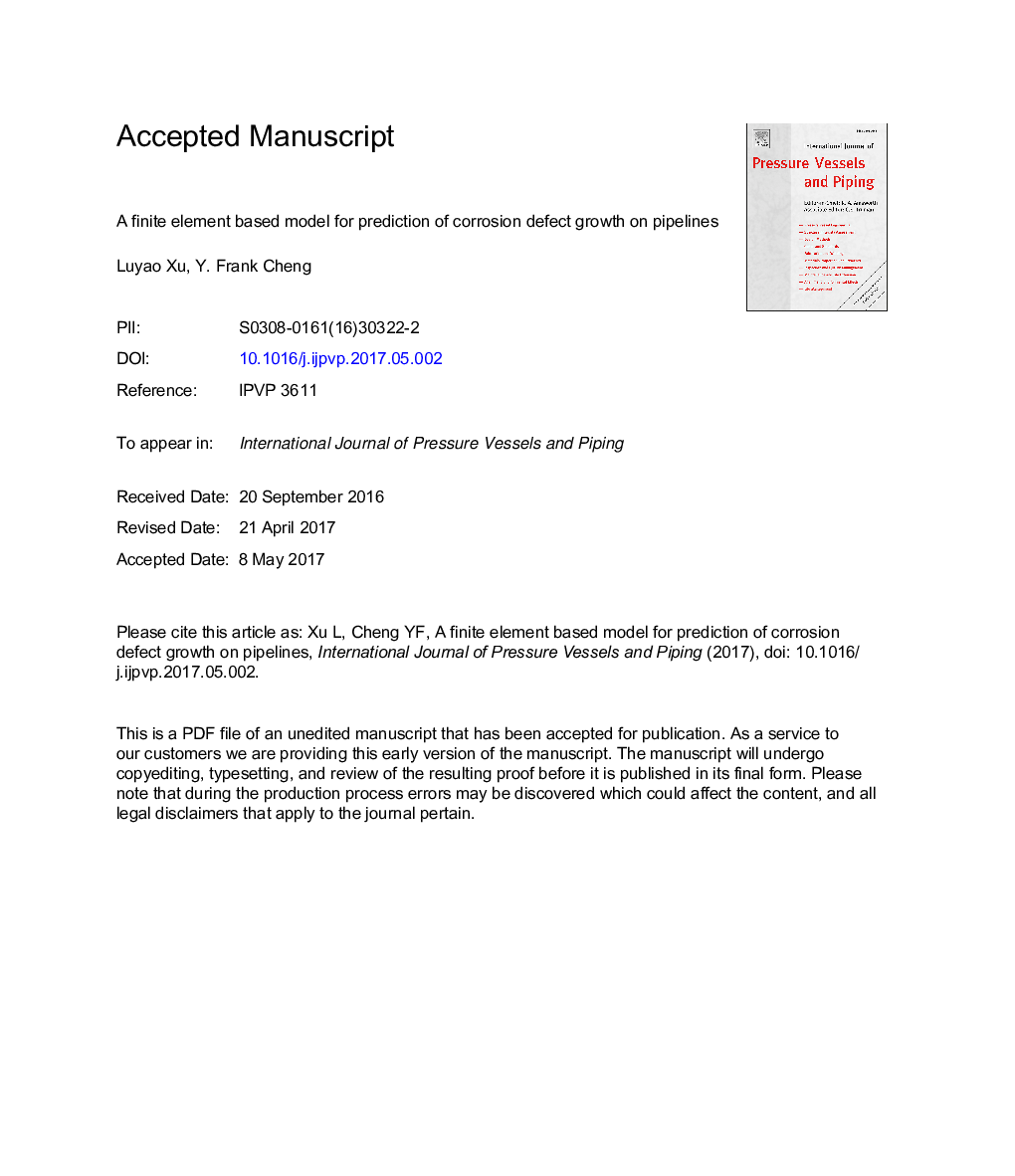| Article ID | Journal | Published Year | Pages | File Type |
|---|---|---|---|---|
| 5016861 | International Journal of Pressure Vessels and Piping | 2017 | 46 Pages |
Abstract
Growth of corrosion defects has been identified as the primary mechanism resulting in pipeline perforation and leaking. In this work, a finite element model was developed to simulate and predict the time-dependent growth of corrosion defects on pipelines in a near-neutral pH bicarbonate solution trapped under disbonded coating. The synergism of stress and local corrosion reaction was determined quantitatively. It is demonstrated that a mechano-electrochemical effect developed at the defect is critical to growth of the defect, resulting in formation of a crack-like flaw at the defect center. The time dependence of the local stress and corrosion current density at the defect is featured with three stages, i.e., a linear increase of local elastic stress and the negligible corrosion enhancement under the testing condition, a slow increase of both local stress and corrosion current density under mild plastic deformation, and a rapid increase of local stress and corrosion current density under a high plastic deformation.
Related Topics
Physical Sciences and Engineering
Engineering
Mechanical Engineering
Authors
Luyao Xu, Y. Frank Cheng,
